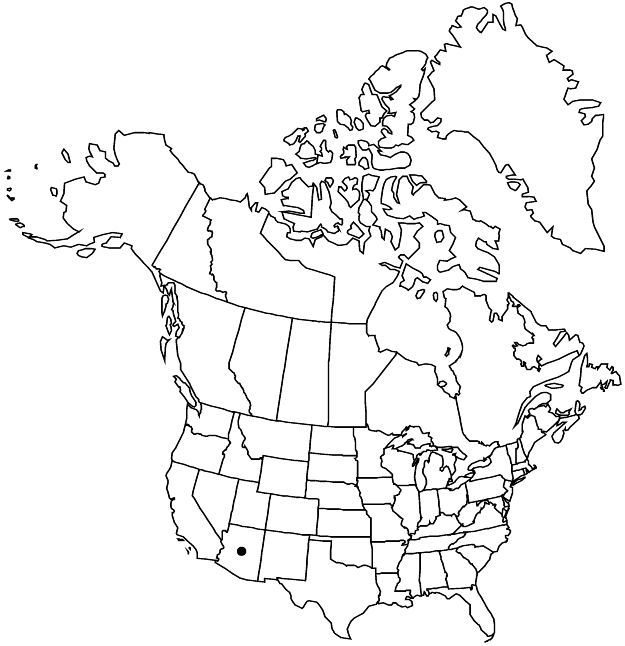Difference between revisions of "Malvastrum bicuspidatum"
Contr. U.S. Natl. Herb. 12: 286. 1909.
FNA>Volume Importer |
imported>Volume Importer |
||
| (2 intermediate revisions by 2 users not shown) | |||
| Line 53: | Line 53: | ||
|publication year=1909 | |publication year=1909 | ||
|special status= | |special status= | ||
| − | |source xml=https:// | + | |source xml=https://bitbucket.org/aafc-mbb/fna-data-curation/src/2e0870ddd59836b60bcf96646a41e87ea5a5943a/coarse_grained_fna_xml/V6/V6_537.xml |
|subfamily=Malvaceae subfam. Malvoideae | |subfamily=Malvaceae subfam. Malvoideae | ||
|genus=Malvastrum | |genus=Malvastrum | ||
Latest revision as of 22:21, 5 November 2020
Herbs, perennial, or subshrubs, (0.4–)1–1.5 m, sparsely horizontally branched, usually with 1 main stem and usually unbranched secondary branches in distal 1/2. Stems erect, canescent, hairs radially symmetric, appressed, not lepidote, with both larger (4- or)5-rayed hairs and minute 4–8-rayed stellate hairs, sometimes shed in age. Leaves: stipules persistent, narrowly lanceolate, subfalcate, 5–6 × 1 mm, apex acuminate; petiole 10–25(–70) mm; blade wide-ovate to ovate-lanceolate to nearly lanceolate on distal stem, unlobed, usually 3–5 × 1.5–3 cm, 1.3–1.7 times longer than wide, 2.5–3.5 times longer than petiole, base usually rounded to wide-cuneate, margins dentate to sharply dentate, apex acute to acuminate, surfaces stellate-hairy, hairs 4–8-rayed, adaxial surface also with simple hairs. Inflorescences axillary solitary flowers at first, later elongated terminal racemes, flowers sometimes appearing clustered on reduced racemes, these terminating each branch; floral bracts 2-fid, 4 × 2 mm. Pedicels 0.5–2 mm, increasing by 0.5–1 mm in fruit; involucellar bractlets adnate basally to calyx for 1–2 mm, narrowly lanceolate to lanceolate, subfalcate, 4–6 × 0.5–1 mm, 1/2 length of calyx lobes, apex acute. Flowers: calyx connate 1/4–1/2 its length, rotate, 6–8 mm, to 7–9 mm in fruit, surface hairy, hairs sparse, tufted, stellate, 2–6-rayed, and few, simple, marginal hairs mixed with minute, dense, stellate, 5–8-rayed hairs; corolla wide-spreading, yellow to orange-yellow, 15–18 mm diam., petals obovate, slightly asymmetrically lobed, 6–8 × 7 mm, exceeding calyx by 3–4 mm; staminal column 2–3 mm, stellate-puberulent; style 9–12-branched. Schizocarps 5.5–8 mm diam.; mericarps tardily shed from calyx, 9–12, 3–4 × 1.8–2 × 1 mm, conspicuously notched, without proximal cusp or with small mucro to 0.1 mm and with 2 conspicuous divergent distal-apical cusps (0.5–)1–1.5 mm, dorsal surface hirsute, hairs simple, rigid, 0.1–1 mm, mixed with simple and stellate, smaller hairs, lateral faces ± glabrous, conspicuously ribbed and thickened. Seeds 1.5–2 mm. 2n = 24.
Phenology: Flowering early–mid spring after winter rains and again in late summer–fall after rains.
Habitat: On slopes in arid to semi-arid regions, primarily in dry shrublands in the Sonoran Desert
Elevation: 30–1300 m
Distribution

Ariz., Mexico (Baja California Sur, Chihuahua, Durango, Sinaloa, Sonora).
Discussion
Subspecies bicuspidatum is the northernmost representative of Malvastrum bicuspidatum, in sect. Tomentosum S. R. Hill, a primarily Central and South American group of five similar species found mainly in arid regions locally from Arizona south to Paraguay and Brazil; the other three subspecies, subsp. campanulatum S. R. Hill, subsp. oaxacanum S. R. Hill, and subsp. tumidum S. R. Hill, are found in central and southern Mexico and differ by their generally shorter cusps, thinner-walled, non-ribbed and even somewhat leathery mericarps, and usually by more congested racemes.
Selected References
None.